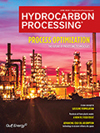Development and industrial proactive of the MFP process
With the continuous progression of environmental regulations and product quality requirements—as well as the increasing market share of new energy vehicles in the context of the carbon peak and carbon neutrality policies—the demand growth rate for refined oil products continues to slow.
IP: 3.145.51.166
The Authors
Xu, Y. - Sinopec Research Institute of Petroleum Processing Co., Ltd., Beijing, China
Youhao Xu is the Chief Scientist in the petroleum refining field of SINOPEC Group, and a Fellow of the Chinese Chemical Society. He has won the National Science and Technology Progress Award twice, the China Patent Gold Award once and the Excellence Award twice. In addition to more than 220 Chinese invention patents and more than 110 overseas invention patents, Xu has published more than 100 papers, articles and case studies in domestic and foreign journals. He is also the sole author of <i>Catalytic Cracking Chemistry and Process</i>and the co-author of <i>Diameter-Transformed Fluidized Bed: Fundamentals and Practice</i> and six other academic monographs, including <i>Catalytic Cracking Process and Engineering</i> (3rd Ed.) and <i>China Refining Technology</i> (4th Ed.).
Sun, X. - Sinopec Research Institute of Petroleum Processing Co., Ltd., Beijing, China
Xin Sun is the Senior Engineer of SINOPEC Research Institute of Petroleum Processing Co. Ltd, and is responsible for the product and technology promotion and technology licensing in the overseas market. Dr. Sun received her BS degree in 2001 and PhD in 2006 from China University of Petroleum (East China).
Zuo, Y. - Sinopec Research Institute of Petroleum Processing Co., Ltd., Beijing, China
Yanfen Zuo received her MS degree in 2019 and PhD in 2022 from the Research Institute of Petroleum Processing, SINOPEC. She is presently an Engineering Consultant at the SINOPEC Economics & Development Research Institute, China. Dr. Zuo’s research interests include catalytic cracking engineering, refining process investment assessment and project evaluation.
Shu, X. - Sinopec Research Institute of Petroleum Processing Co., Ltd., Beijing, China
Xingtian Shu is a member of Chinese Academy of Engineering, and graduated from East China Institute of Chemical Technology (East China University of Science and Technology). Since graduation, Shu has been working in SINOPEC Research Institute of Petroleum Processing Co. Ltd. for more than 50 yr with focuses on synthesis, modification and application of zeolite catalysts in petroleum refining and petrochemicals industries, and has co-invented more than 400 patents and co-authored more than 100 papers.
Related Articles
From the Archive






Comments